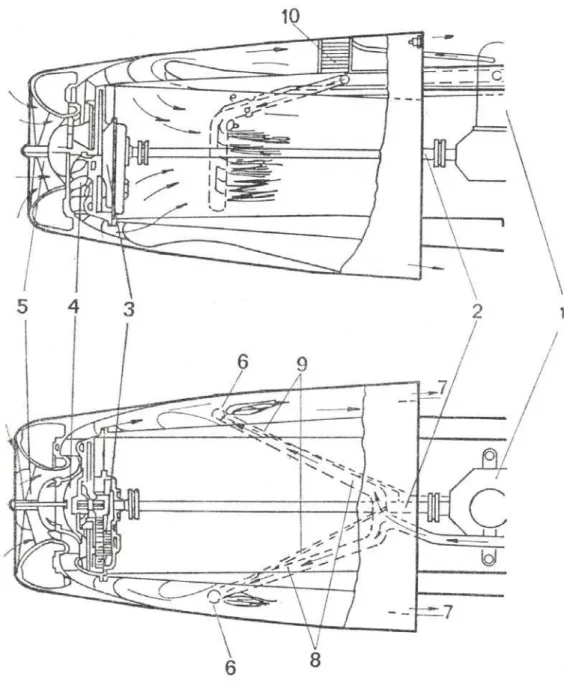Anniversary Session “Celebrating 100 year of the first jet aircraft invented by Henri Coanda”, Romanian Academy, 15 December 2010, Bucharest, Romania
Corneliu BERBENTE*
Henri Coanda is a scientist with a special personality impressing by the diversity of the areas that he addressed with remarkable results: aeronautics, propulsion systems, cooling devices, prefabricated materialss and more.
He is an eloquent proof that a complete scientist is also an artist, but one might say just as well that a complete artist can not be completely devoid of scientific knowledge. Moreover, Coanda had talent and was interested in sculpture, painting and music.In 1902 he enrolled on the sculpture classes of master RODIN where he met Constantin Brâncuşi.
I would say that Coanda’s most important and active quality was his imagination, a synthetic quality which opened way to analytical thinking.
But let us restrict our attention to the field of aeronautics. On March 18, 1906, Traian Vuia made his first complete mechanical flight attempt with his machine able to take off from a flat surface by on-board means without outside assistance. On June17, 1910, Aurel Vlaicu flew for the first time in Romania. In October, the same year, at the Paris Air Show, Henri Coanda exhibited his device COANDA 1910 (Fig. 1), an airplane without a propeller, the world's first aircraft equipped with an aeroreactive engine.
Fig.1 The airplane “Coanda – 1910”
Corneliu BERBENTE 4
We could make a clear picture of the scientist and inventor’s scientific thought, presenting the design innovations of the aircraft:
thick wing, bilongeron ribbed structure (steel), slotted in on the leading edge for high lift at takeoff and landing. The wing was aerodynamically tested by the scientist himself;
covering of heat-shaped molded plywood (instead of cloth);
the wing-fuselage attachment formed by two tubular steel struts, thus avoiding the wire network which significantly increased the drag;
the wings of different lengths, were stagged, the upper wing being set ahead of the lower wing; later on this configuration was called “sesquiplan”.
the fuel and lubricant tanks were located in the wings;
the landing gear on two wheels provided with steel dampers.
However, the great novelty of Coanda’s aircraft was its new propulsion system which represented a real revolution in the construction of airplanes engines. Coanda used the term “turbo-propulseur” to describe this propulsion design (after the current terminology it is called motojet ) which was a combination of a conventional piston engine, a compressor, a combustion chamber and reaction nozzles. We note that, as well as Traian Vuia had done earlier, the Romanian inventor built not only the cell, but also the propulsion system, bringing substantial new elements.
It would be interesting if we had more information on any of Traian Vuia views about the achievements of Henri Coanda, since both were based in France at the same time, for quite a long time.
The scheme of the turboprop COANDA is shown in Fig. 2. The notations are as follows:
1. piston engine “CLERGET”, 4 cylinders, 50 HP at 1000 rot / min;
2. driving shaft
3. revolutions multiplier (4 times multiplication)
4. compressor
5. air flow regulating shutter (pilot controlled);
6. combustion chamber of annular section (placed laterally near the fuselage);
7. nozzles
8. exhaust gases tubes
9. fuel feed pipes(free fall)
10. piston engine radiator
Fig. 2 Scheme of the aeroreactive engine “H. Coanda-1910”
Corneliu BERBENTE 6
Therefore, even if “Coanda-1910” aircraft hadn’t taken off, the invention of the propulsion system would have been equally valuable.
Afterwards, Henri Coanda designed a great number of aircrafts, many of them in England, known as Bristol-Coanda.
Planes of thaïs type were also used by the Romanian Army. However Coanda's proposals on the organization of an aviation industry in the country were rejected by the Romanian Ministry of War.
We show below, without comment, several photographs, beginning with a glider and ending with the famous lenticular aerodyne.
The last photo is the lenticular aerodyne, a direct application of the Coanda Effect. The Coanda Effect, an effect that could make alone the object of a separate presentation, and its many theoretical and practical aspects shall not be mentioned here.
Corneliu BERBENTE 10
With respect to the references, I would like to express my gratitude to the authors cited and others like them, soulful people, passionate for aviation, which over time have kept alive the memory of the great Romanian inventors, stressing the Romanian priorities, which we often forget to make known to younger generations and to sustain them with strong arguments for all the world to see.
